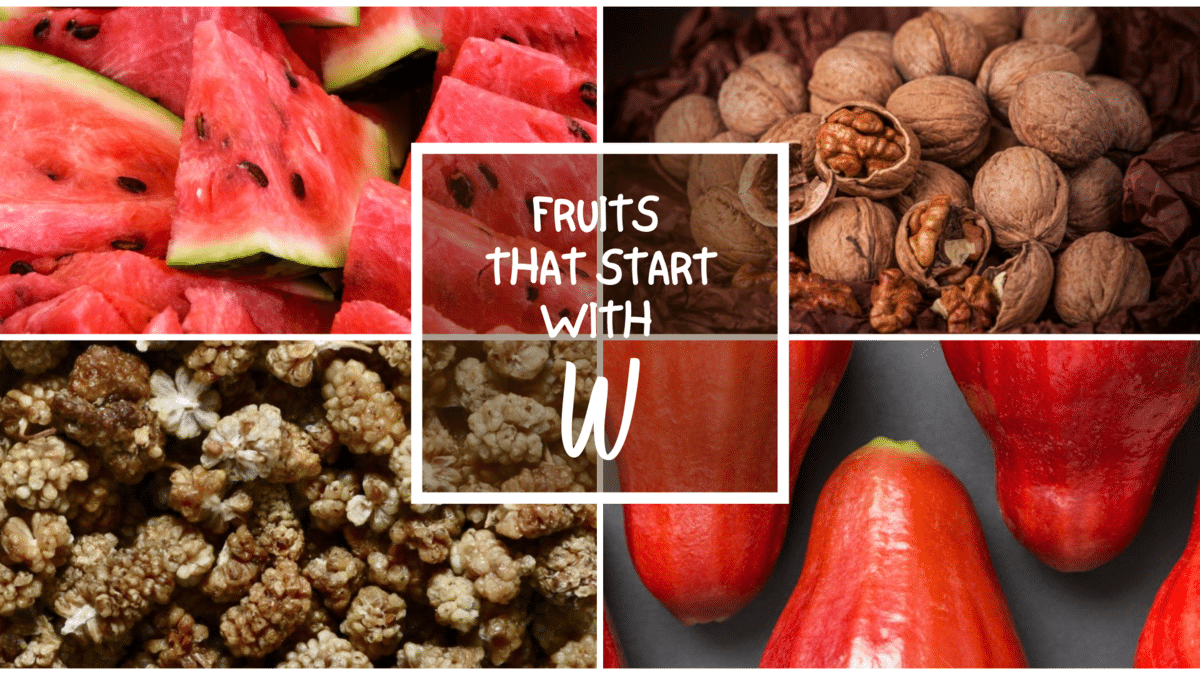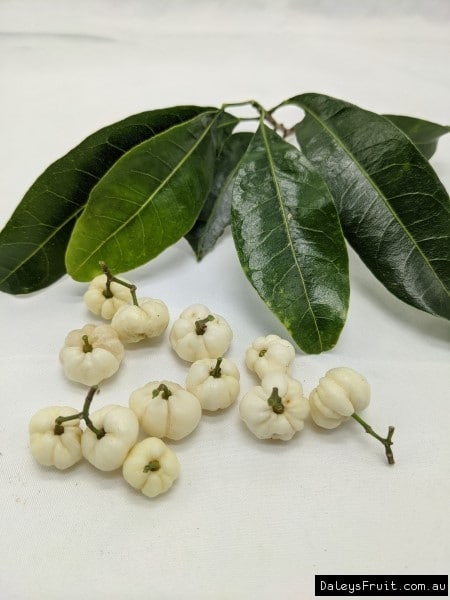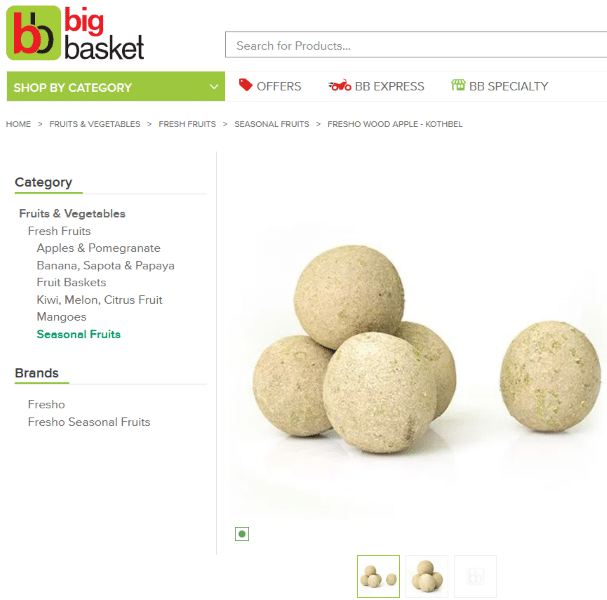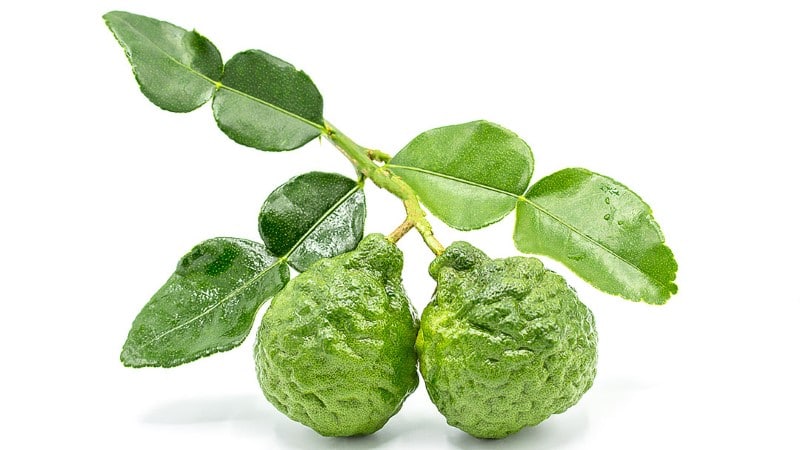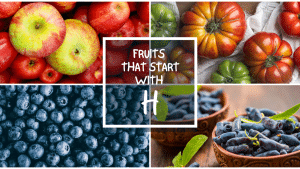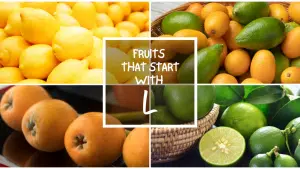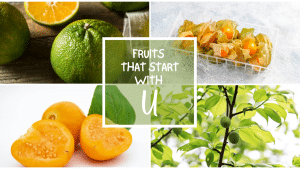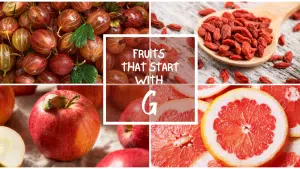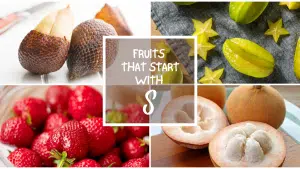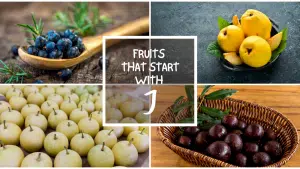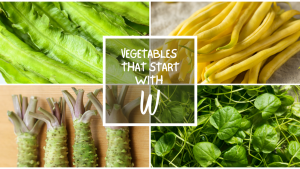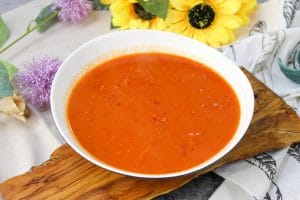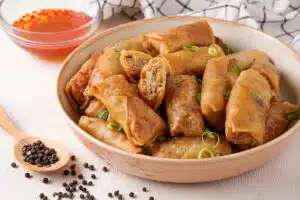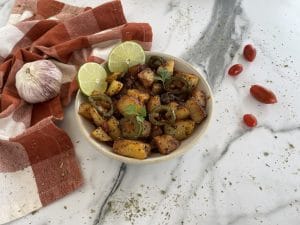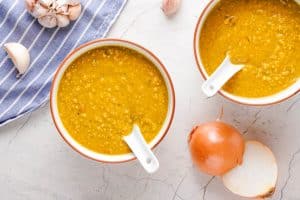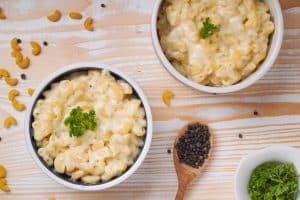All The Fruits That Start With W
Important Note: When you buy through our links, we may earn a commission. As an Amazon Associate we earn from qualifying purchases. Content, pricing, offers and availability are subject to change at any time - more info.
You may be wondering why a list of fruits is vital for you. This should not worry you because these kinds of the list are essential for you to know and understand the variety of fruits available at your disposal. They range from the wild to domesticated fruits with different nutritional values and tastes, from sweet, sour, and bitter. The list of fruits that have the first letter W is limitless. They include Watermelon, walnut fruit, Water Apple fruit, Wax Gourd fruit, and Wineberry fruit, among many others. This list is extensively discussed below.
- Watermelon
- Walnut
- Water Apple
- Wax Apple
- Wax Gourd
- White Aspen
- White Mulberry
- Wineberry
- Winter Squash
- Wolfberry
- Wood Apple
- Wild Lime
- Wild Custard Apple
- West Indian Cherry
- Williams Pear
- White Sapote
- Wild Orange
- Western Hackberry
- Wealthy Apple
- The Final Letter
Watermelon

The scientific name of a watermelon is Citrullus Lanatus. It is a part of the Cucurbitaceae family from the kingdom Plantae, among which it is an important fruit. It is a vastly grown fruit worldwide and has more than a thousand varieties. Its origin, however, is Northeast Africa, from where it spread all over the world. It is a sweet and juicy fruit that efficiently quenches thirst over the summer heat. It is used to make fruit salads, pizza, syrup, and a smoothie. Watermelon is usually round and oval, with a green peel covering its bright red flesh. It has lots of nutrients such as vitamin A and C and antioxidants. A watermelon keeps one hydrated and is linked with lesser cancer risks of the prostate and colorectal. Its seeds contain zinc, iron, folate, potassium, copper, and magnesium, considered incredibly nutritious. These nutrients help to boost the body’s metabolism.
Walnut

The scientific name of the walnut fruit is Juglans regia. It is a member of the more prominent family of the juglans genus, which produces edible nuts. The walnut fruit is a large fruit with an edible seed encircled in a thick husk shell that is not edible. The edible seed is what we refer to as a nut. Its origin is North and South America, Southern Europe, the West Indies, and Asia. The nut fruit is taken while fresh or toasted, alone, or in other edible foods like sauces, pastries, or confectioneries. Walnuts are used to make chocolates and in salads when spiced. It is famous all over the globe. It is highly used for its sensory, health, and nutritional values.
Water Apple
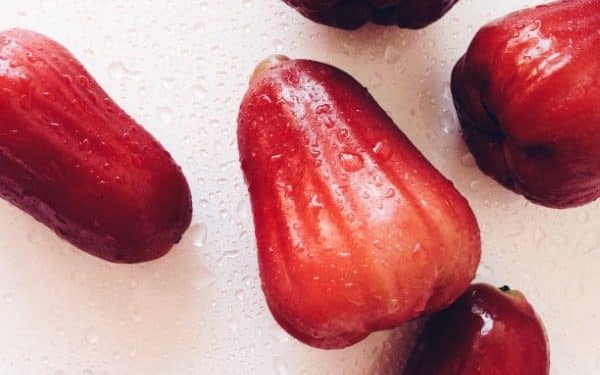
The scientific name of the water apple fruit is Syzygium aqueum. The water fruit is also commonly referred to as rose apple or watery rose apple. It is a flowering plant species part of the Myrtaceae more prominent family. Its origin is the Sunda, Malay Peninsula, Andaman, and the Nicobar Islands. It grows in wet, warm, and humid climatic conditions. The soil in which it’s grown should be rich in moisture content. During prehistoric times, however, the fruit was introduced to a larger area and is now vastly grown in the tropics. It is also available in Hawaii, Florida, and the United States. It is a pear-shaped or bell-shaped fruit with waxy skin and crunchy flesh made in various colors. The Water Apple Fruit is usually juicy. It is pretty sweet when ripe. However, when unripe, it has an astringent taste that is good for preparing curries, pickles, and chutneys. The water apple fruit has various nutritional values where it is suitable for weight loss because of its low-calorie levels. It also helps with digestion because it has fibers and contains that aid in boosting the body’s immunity.
Wax Apple
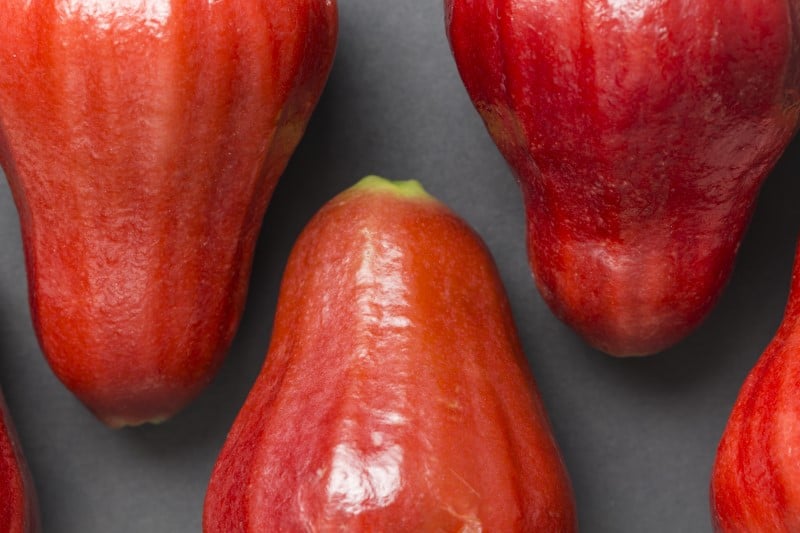
The Wax apple fruit goes by the scientific name Syzygium samarangense. It is also referred to as the Java apple. It is edible and takes on different colors, just like the water apple fruit. A ripe wax apple fruit looks like an apple on the outside in color. It, however, doesn’t taste like an apple, nor does it have the fragrance of the apple. Its taste is a little like that of a snow pear, and its liquid-to-flesh proportion is like a watermelon. It is commonly used to prepare jam and can also make juice. It is known to help prevent diabetes, help with digestion, and those stroke cases.
Wax Gourd
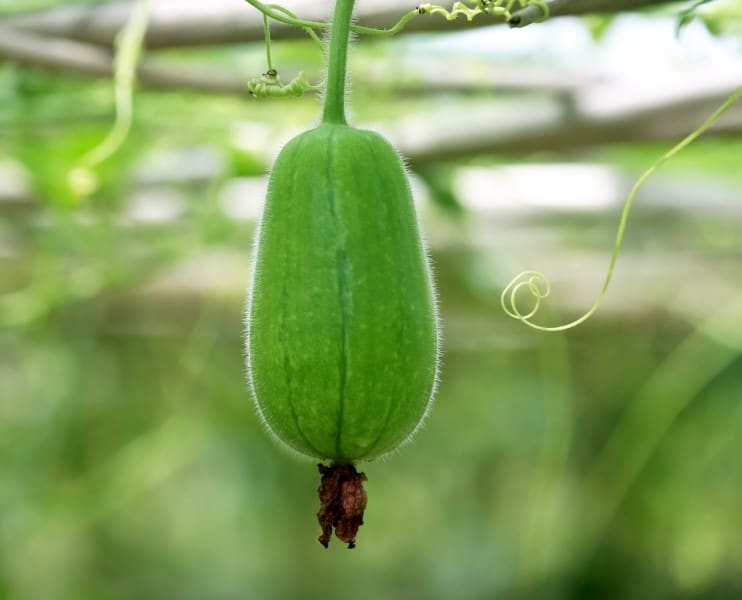
The scientific name of the wax gourd fruit is Benincasa hispid. It is also referred to as the ash gourd, tallow gourd, winter gourd, ash pumpkin, and winter melon, among other names. It is a vine grown for its large edible fruit that almost resembles a watermelon in size and color. Wax gourd, also known as ash gourd, is a vine that is grown for its edible fruit that is very large. The Wax gourd fruit is the only member of the genus Benincasa family. When young, the fruit contains a fuzzy coating of hairs. Its flesh, when immature, is thick white, and it has a sweet flavor. When it matures, it loses the hairs and gets a waxy coating, hence a wax gourd fruit. The wax coating helps the fruit a long life span of up to a year. Its origin is South and Southeast Asia. It is vastly grown throughout Asia, Japan, and Java, where its believed to have originated from. The fruit is often boiled, cubed, and eaten on its own or added to stews and soups. It can also be fried, baked, candied, or peeled and added to salads or taken raw, just like cucumber is sliced and taken raw. It may help improve digestion and prevent ulcers.
White Aspen
The white Aspen Fruit goes by the scientific name of Acronychia oblongifolia. It is also called the Pigeon Berry or Yellow Wood. It is grown on the white aspen tree, a rainforest tree that produces edible bushfood fruits. These fruits have a solid citrus taste with honey notes. Its origin is the Daintree region in Queensland, but it grows as far as Sydney in the South. The white aspen fruit is white. It grows to 1cm in diameter and mostly grows during the winter season. It has a crunchy texture with an aromatic orange or lemon taste with some eucalyptus or honey hints. You can enjoy them when fresh alone or add them to side dishes or salads. When cooked, they go well with poultry or seafood. They can also be used in juices, sauces, cakes, syrups, cocktails, and preservatives. It is a delicious edible. They fall off the branch when ripe making them an easy harvest. They help with bladder and prostate problems. They also ease different aches such as nerve, back, and joint pains.
White Mulberry
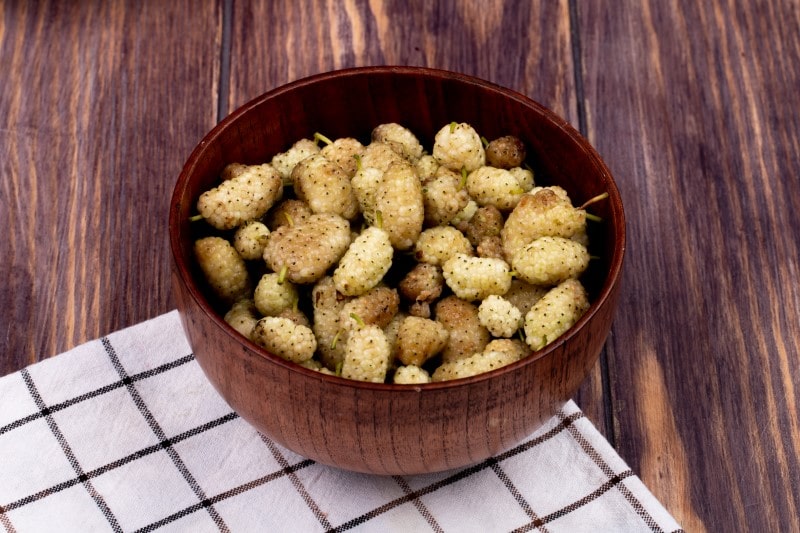
White mulberry fruit, whose scientific name is Morus alba, is a part of the more prominent Moraceae family. This fruit is from a shrub or tree whose origin is China. It looks like a blackberry, but it is white. They are white when young, but upon ripening, they turn to shades of purple and pink. They have an unpleasant taste when immature hence best when overripe. They have a low acidity with a hint of honey-like flavor. They are usually available during the summer and spring months. They are used in baking and juices because they don’t impart any color. They are also used in ice creams, tart and pie fillings, jams, jellies and other baked foods. When raw they can be used as snacks, added to salads or used as cereals. They can be put in a freezer for future use. White mulberry fruits pair well with other berries, stone fruits and young cheeses like baking spices, mint, duck, pork and citrus. They are used to treat illnesses such as anemia, insomnia and fatigue.
Wineberry
Scientifically the Wineberry fruit is referred to as Rubus phoenicolasius. Its origin is Japan, Korea, and China. It is an Asian species of the Rosaceae (rose) family. They taste a lot like raspberries, but they are sourer. When young, they are white and upon ripening, they become orange and later red. When still orange, they are really sore. Wineberries are sweetest when they are completely ripe and red. They are used in making pastries like pies and other sweet delicacies. Wineberries contain antioxidants, vitamin C, minerals and fiber.
Winter Squash
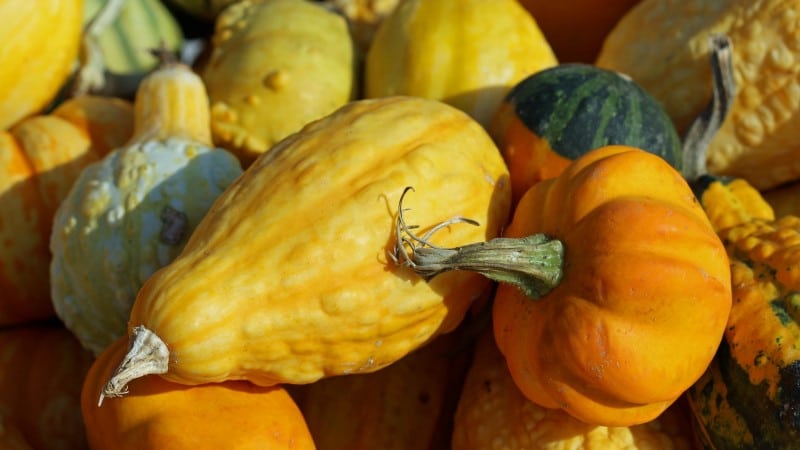
The scientific name of winter squash is Cucurbita maxima. These plants are native to Mexico and Central America. Winter squash is the native food of rural and indigenous people worldwide.
To prepare winter squash vegetables, peel them, remove the seeds and cut into cubes and steam them for a quick recipe. You can also bake these vegetables and serve them as desserts. However, in baking, you don’t need to peel the vegetables; just cut the squash into half lengthwise, poke small holes, and bake them until tender in a pan.
You can bake the winter squash. First, cut the fruit in half, remove the seeds and scoop the pulp from the cut halves. Add little water, salt, maple syrup, and olive oil to the cut halves and bake at 400 degrees for an hour. You can substitute winter squash with potatoes or combine the two to make a mashed maple squash.
Winter squash is a good source of vitamin C, which is essential in improving immunity and boosting your body’s stamina to fight diseases and infections. These vegetables also contain fibers which are important in maintaining good health in the bowel and keeping check the digestion process to avoid sudden spikes in blood sugar levels. Winter squash is packed with antioxidants and anti-inflammatory compounds that help prevent cancer by inhibiting the growth of cancer cells.
Wolfberry

The scientific name of the Wolfberry fruit is Lycium barbarum. It is also known as the goji berry. It is from the boxthorn species of the nightshade family. The fruit is a bright orange-red berry that is from China. The Wolfberry fruits are species from Asia, where they have been consumed for centuries. They are hence used mostly in Asian cuisines. They can be eaten while raw, dried like raisins, or when cooked. Wolfberry fruits can also be used in wines, medicines, herbal teas and in juices. They have been used over time to help treat common illnesses such as fever, eye-related problems, diabetes and high blood pressure. They are rich in nutrients and help with better sleep, having a feeling of well-being and calmness, weight loss and better athletic performance. They have antioxidants and help boost your overall immune system. They are also a good source of proteins for your body. Goji berries can also be taken as supplements.
Wood Apple
It is also called the bael fruit. Wood apple fruit usually has a funny smell but with a delicious taste like that of raisin jam. Its origin is the Northern belt of India. It is a common summer fruit that has the appearance of a coconut on the outside. It tastes somehow like tamarind. It can be eaten raw and alone, but if very sour, then a hint of honey can be added. It is said to be greatly effective against sunstroke, especially because it is available and used during the summer. It is good for the body because it contains Vitamin C and is a source of fiber. It can be used as a juice. It is recommended that taking at least one glass of the wood apple fruit juice every day during the summer period can help with digestion and protect the body from sunstroke.
Wild Lime
It is also known as lime prickly ash, even though it is not related to other ash trees. The scientific name of this fruit is Zanthoxylum fagara. It belongs to the larger family of Rutaceae grown in the tropical and subtropical areas because of their edible acidic fruits. Its origin is Indonesia or the mainland of Asia. The fruit has a black and brown color and is well known for its aroma and good fragrance. The wild lime fruit is an ingredient used in chutneys and some pickles. It is used in confections, foods and the flavoring of drinks. Drinks made from wild lime fruit have a clear distinction from those made with lemon. This juice may be dried, frozen, canned or concentrated. Lime oil is processed in the West Indies from the peel of the fruit. Citric acid and citrate of the lime is also made from the fruit. Limes have antioxidants and Vitamin C, which have lots of health benefits. Drinking juice from the wild lime fruit reduces the risk of heart disease, aid iron absorption, improves immunity, promotes healthy skin and prevents kidney stones.
Wild Custard Apple

The scientific name of the Wild Custard Apple fruit is Annona senegalensis. It is also commonly referred to as the African Custard apple, sunkungo and wild soursop. It is a species of the flowering plant of the custard apple family known as Annonaceae. Its origin is Senegal in Africa. The flesh of this fruit is juicy and aromatic. Other times it is hard and sour. When ripe, the flesh is soft such that it somewhat gives when pressed. It can be eaten when raw. The skin and seeds, however, are inedible and hence should be disposed of. The raw flesh can also be used in milkshakes, yogurt drinks, ice creams and fruit salads. The Wild Custard Apple is high in antioxidants. It promotes good digestion, boosts your mood, benefits eye health and supports immunity.
West Indian Cherry
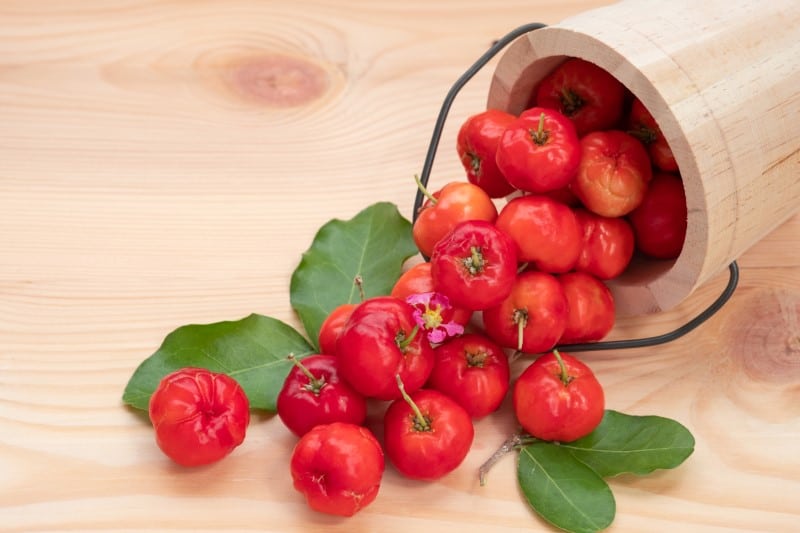
The scientific name of the West Indian fruit is Malpighia emarginata. Other names of this fruit include Guarani cherry, acerola cherry, wild crepe myrtle and Barbados cherry. Its origin is Southern Mexico and the Caribbean. They are mostly grown from shrubs or trees that are in limited shade and well-drained, moist soil. This fruit tends to have a scented, sweet and sour taste. It can be eaten alone while raw or cooked into different meals. It is used in medicines to treat various illnesses like dysentery, diarrhea, colds, coughs and liver problems. It is rich in Vitamin C thus, it can be used to boost the overall immunity of the body.
Williams Pear
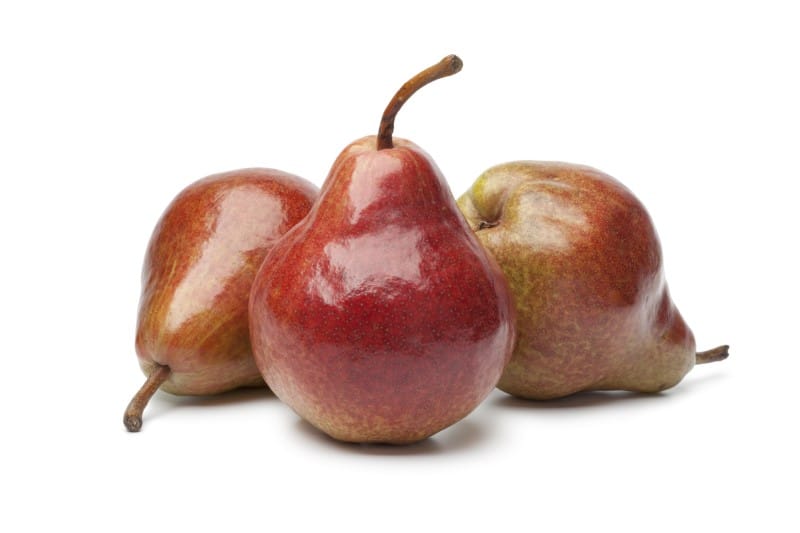
The scientific name of the Williams Pear fruit is Pyrus communis. It is also commonly referred to as the European Pear or the Bartlet Pear in the United States. They have a pear taste with a smooth, buttery texture. It is also a very juicy fruit. They are best eaten raw when fresh, and alternatively, they can be canned. Its skin becomes brighter as the fruit ripens. When young, it is usually green and upon maturity, it becomes a smooth and firm golden yellow with blushes. The flesh is cream in color, moist, fine-grained and aromatic. It has a few black-brown seeds that are small in size. When they are not yet fully ripe but have matured, they are crunchy and sour. When they are fully ripe, they are smooth, and juicy, with a creamy texture and a sweet taste. They are used in desserts, cocktails and savory dishes. They contain iron, potassium, dietary fiber and vitamin C. They can be taken while raw or when cooked. In cooking, they can be used for baking, grilling and boiling. They can be consumed while fresh or sliced into wedges, added to fruit and vegetable salads for a sweet taste, blended in ice cream, or served on cheese. They can also be used as syrups, chutneys, and preservatives. The William pear fruit is popular in the United States and has many uses in the food industry.
White Sapote
White sapote fruit, whose scientific name is casimiroa edulis, is a tropical fruit grown from tropical trees that belong to the larger family of Rutaceae. It is also called Mexican apple, Casimiroa and cochitzapotl in Nahuatl language which means ‘sleep sapote’. Its origin is Eastern Mexico and Central America, south to Costa Rica. The fruit is edible, nutritious and tasty. They contain vitamin C, potassium, iron, vitamin A and dietary fiber. It should, however, be taken in moderation. It can be eaten alone or added to other fruits to form a salad. It has creamy white flesh and is usually green or golden yellow. They have a banana-like, bland, peach to pear taste. It functions as an energizer, oxygenates the brain and improves the body’s immune system. As an energizer, it is added to milk or orange juice with a few drops of vanilla. When cooked, it becomes limp and not as tasty hence it is preferred when uncooked.
Wild Orange
Wild orange fruit resembles an orange but isn’t an orange. The scientific name of the Wild Orange Fruit is Capparis mitchelii. It’s an indigenous plant whose origin is Australia. It has vastly spread in Western New South Wales. It is a tasty bushy fruit taken in Australia on a regular basis. The fruit is usually ready by mid to late summer. When young, the fruit is green, but as it ripens, it becomes soft with yellow to orange colors. It also has an aromatic smell upon ripening. Other times the fruit will appear to be purple or have a dull orange color. The fruits have yellowish flesh that is normally consumed. The skin of the fruit should be peeled off before consumption, and the seeds should also be removed. The fruit can be taken while raw or eaten together with desserts. It can alternatively be added to dishes like rice, couscous, and curries. The wild orange fruits have been proven to have antidepressant, antifungal, and antibacterial properties. They are also used as stress relievers. They also help during the early stages of cold and flu.
Western Hackberry
The Western Hackberry fruit, whose scientific name is Celtis occidentalis is also known as the common hackberry, sugarberry, nettle tree, American hackberry and beaver wood and northern hackberry. It is a huge deciduous tree whose origin is North America. These fruits are small and round drupes with a sweet taste. When young, the fruits are green and upon maturity, they become red and later a deep purple color. The western hackberry fruit was traditionally used for its medicinal purposes and also as a source of food.
Wealthy Apple
The scientific name of the wealthy apple fruit is Malus domestica. It belongs to the American heirloom variety of fruits. It usually has a great taste with a beautiful appearance. They are usually medium or large in size. They have a bright red crust with a hint of green and yellow. The flesh of the wealthy apple fruit is soft, crunchy and all juicy with fascinating notes. They are usually available during the fall. These apples have low-calorie levels, high carbohydrate and fiber contents. The fiber aids with digestion. Wealthy apple fruits also have vitamin C, which is good for the body’s immunity and potassium which helps with heart conditions. They can be eaten raw or even get cooked. It can be used in sauces, crisps, pies, raisins and nuts. If they are to be used for cooking, then they should be acquired earlier and put in a cool, dry area or in a refrigerator.
The Final Letter
The list of these fruits is to add to your knowledge the varieties that are present when it comes to fruits. With their unique properties health-wise and in making different recipes, they are essential in your life.
